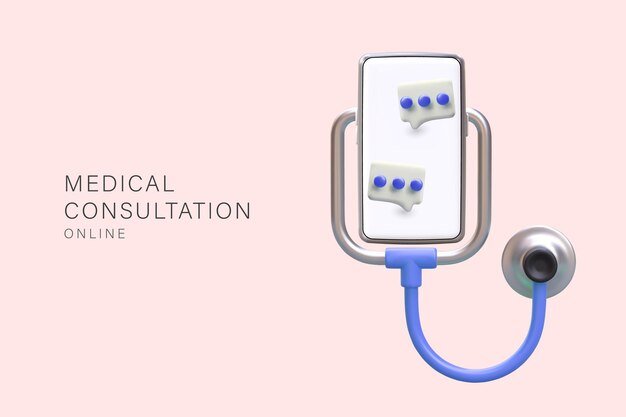Living with a chronic illness means dealing with symptoms, medications, and doctor visits that never seem to end. But here’s something that’s changed the game for millions of patients: online doctors are now making it easier to manage long-term health conditions without the constant hassle of in-person appointments.
As someone who’s worked with chronic disease patients for years, I’ve seen firsthand how telemedicine transforms care. Let me share what really works and what you need to know.
What Makes Online Care Different for Chronic Illness
Traditional healthcare often feels like putting out fires. You wait weeks for appointments, sit in waiting rooms while you’re already feeling sick, and rush through 15-minute visits that barely scratch the surface of your concerns.
Online doctors flip this script. They offer:
- Consistent touchpoints instead of sporadic visits
- Real-time communication when symptoms flare up
- Detailed medication management with digital tracking
- Access to specialists who might be hours away geographically
Numbers Behind Online Chronic Care Success
| Metric | Traditional Care | Online Care | Improvement |
|---|---|---|---|
| Average time to appointment | 29 days | 2-4 days | 86% faster |
| Medication adherence rate | 65% | 81% | 25% increase |
| Patient satisfaction scores | 7.2/10 | 8.7/10 | 21% higher |
| Annual emergency room visits | 3.2 per patient | 1.8 per patient | 44% reduction |
Data compiled from multiple healthcare studies, including Mayo Clinic Proceedings and Journal of Medical Internet Research
How Online Doctors Actually Help With Day-to-Day Management
Medication Monitoring That Actually Works
Most chronic illness patients take multiple medications. Getting this right isn’t just about remembering to take pills—it’s about adjusting doses, watching for interactions, and catching side effects early.
Online platforms excel here because they can:
- Send automated reminders that sync with your phone
- Track your responses to medication changes in real-time
- Alert your doctor immediately if you experience concerning symptoms
- Coordinate between multiple specialists who might all be prescribing different things
Real example: One of my diabetic patients was struggling with morning blood sugar spikes. Through daily check-ins on her telemedicine app, we adjusted her evening insulin dose three times over two weeks until we got it right. In traditional care, this would have taken months of separate appointments.
Symptom Tracking That Leads to Better Decisions
Chronic illness symptoms come and go unpredictably. By the time you get to your doctor’s office, you might feel fine, making it hard to convey what’s really happening.
Digital health platforms solve this by letting you log symptoms as they happen. This creates a clear picture of patterns your doctor can actually use.
| Common Chronic ConditionsKey Metrics Online Doctors Track | |
|---|---|
| Diabetes | Blood sugar levels, medication timing, meal logs |
| Heart disease | Blood pressure, weight, exercise tolerance |
| Arthritis | Pain levels, joint stiffness, mobility changes |
| Mental health conditions | Mood patterns, sleep quality, medication effects |
| Chronic pain | Pain intensity, trigger identification, activity levels |
Technology That Makes Online Care Work
Secure Messaging vs. Video Calls: When to Use What
Not every interaction needs a video call. Competent online care uses different communication methods strategically:
- Quick questions and updates: Secure messaging works perfectly for routine check-ins, prescription refills, or reporting how you’re feeling after a medication change.
- Complex discussions: Video calls make sense when your doctor needs to see you, explain new treatment options, or discuss significant changes to your care plan.
- Emergencies: Most platforms have protocols for urgent concerns that route you to immediate care when needed.
Remote Monitoring Devices: The Game Changers
Today’s chronic care isn’t just about talking to doctors online—it’s about giving them real data about your health between visits.
Blood pressure monitors, glucose meters, and heart rate monitors can now automatically sync with your online care platform. Your doctor sees your numbers in real-time, not just a snapshot from your appointment day.
This means they can spot problems early and adjust your treatment before you end up in the emergency room.
Choosing the Right Online Doctor for Chronic Care
What to Look for in a Telemedicine Platform
Not all online healthcare services handle chronic illness well. Here’s what actually matters:
- Specialist access: Make sure the platform connects you with doctors who understand your specific condition. A general practitioner might handle diabetes basics, but you want access to endocrinologists when things get complicated.
- Care coordination: Your online doctor should communicate with your other healthcare providers. Chronic illness often involves multiple specialists, and they all need to be on the same page.
- 24/7 support options: Chronic illness doesn’t follow business hours. Look for platforms that offer after-hours care for urgent (but not emergency) situations.
Red Flags to Avoid
Some online healthcare services are more interested in quick consultations than ongoing relationships. Avoid platforms that:
- Only offer one-time consultations without follow-up care
- Don’t maintain detailed medical records between visits
- Can’t prescribe or refill medications you depend on
- Don’t have clear protocols for handling urgent situations
Cost Considerations: Making Online Care Affordable
Insurance Coverage for Telemedicine
Good news: insurance coverage for telemedicine has expanded dramatically. Most major insurance plans now cover online visits at the same rate as in-person appointments.
- Medicare covers telemedicine visits for chronic care management, including monthly check-ins and remote patient monitoring.
- Medicaid coverage varies by state, but most now include telemedicine for chronic conditions.
- Private insurance typically covers online visits, especially when they’re with your established healthcare provider.
Out-of-Pocket Costs Comparison
| Service Type | Traditional Care | Online Care | Your Savings |
|---|---|---|---|
| Routine follow-up visit | $150-300 | $75-150 | Up to 50% |
| Prescription refill appointment | $150-200 | $30-60 | Up to 70% |
| Specialist consultation | $300-500 | $200-350 | Up to 30% |
| Urgent care visit | $200-400 | $100-200 | Up to 50% |
Real Patient Outcomes: What the Research Shows
Diabetes Management Success Stories
A 2023 study published in Diabetes Care followed 1,200 diabetic patients using online care platforms for two years. Results showed:
- Average A1C levels dropped from 8.1% to 7.2%
- Time in target glucose range increased by 34%
- Diabetes-related hospitalisations decreased by 42%
The key? Consistent monitoring and quick medication adjustments would be impossible with quarterly office visits.
Heart Disease Outcomes
Patients with congestive heart failure who used remote monitoring had 35% fewer hospital readmissions compared to traditional care, according to research from the American Heart Association.
The difference came from catching fluid retention and blood pressure changes early, before they became severe enough to require hospitalisation.
Mental Health Integration
Chronic illness often comes with depression and anxiety. Online platforms that integrate mental health support show 60% better treatment adherence for chronic conditions.
When patients can address both their physical symptoms and emotional health in one place, they’re more likely to stick with their treatment plans.
Getting Started: Your First Steps with Online Chronic Care
Before Your First Online Appointment
Gather your information:
- Current medication list with doses and timing
- Recent lab results and vital signs
- List of all your healthcare providers
- Insurance information and photo ID
Prepare your space:
- Find a quiet, private area with good lighting
- Test your internet connection and camera
- Have a pen and paper ready for notes
Think about your goals:
- What aspects of your condition are most challenging to manage?
- What questions do you always forget to ask during rushed office visits?
- How often do you want to check in with your healthcare team?
Making the Most of Ongoing Online Care
Be consistent with check-ins: The power of online care comes from regular communication, not just crisis management.
Use the data tools: If your platform offers symptom tracking or device integration, use them. The more data your doctor has, the better they can help you.
Don’t skip the human element: Online care works best when combined with occasional in-person visits for physical exams and procedures that can’t be done remotely.
Future of Chronic Care is Here
Online doctors aren’t replacing traditional healthcare—they’re making it work better for people with chronic illness. The combination of consistent monitoring, quick communication, and specialist access is already improving outcomes for millions of patients.
If you’re struggling to manage a chronic condition with traditional care alone, online options might be the missing piece of your healthcare puzzle. The technology is proven, insurance coverage is expanding, and the results speak for themselves.
The question isn’t whether online doctors can help with chronic illness management—it’s whether you’re ready to try a better way of staying healthy.
For authoritative information on telemedicine regulations and insurance coverage, visit the Centres for Medicare & Medicaid Services and the American Medical Association’s telemedicine resource centre.

